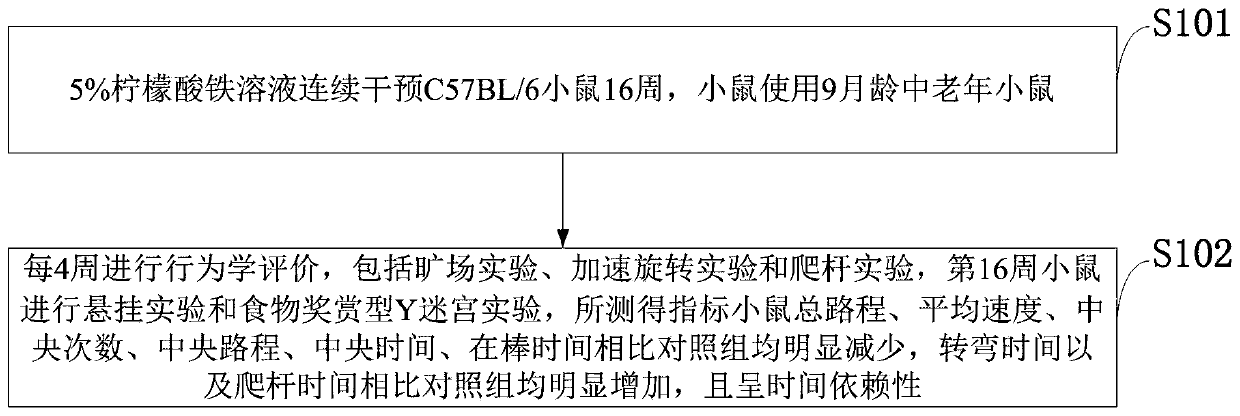Chronic food-borne Parkinson's disease mouse model and building method and application thereof
A Parkinson's disease, mouse model technology, applied in the direction of pharmaceutical formulations, organic active ingredients, heavy metal active ingredients, etc., can solve the problems of animal insensitivity, large side effects, and rarely include PD clinical behavior disorders and pathological characteristics, to achieve Effect of long course of disease and high incidence
- Summary
- Abstract
- Description
- Claims
- Application Information
AI Technical Summary
Problems solved by technology
Method used
Image
Examples
Embodiment Construction
[0040] In order to make the objectives, technical solutions and advantages of the present invention clearer, the present invention will be further described in detail below in conjunction with embodiments. It should be understood that the specific embodiments described herein are only used to explain the present invention, but not to limit the present invention.
[0041] In view of the problems in the prior art, the present invention provides a chronic food-borne Parkinson's disease mouse model and its establishment method and application. The present invention will be described in detail below with reference to the accompanying drawings.
[0042] Such as figure 1 As shown, the method for establishing a mouse model of chronic foodborne Parkinson's disease provided by the embodiment of the present invention includes the following steps:
[0043] S101: 5% ferric citrate solution continuously intervenes in C57BL / 6 mice for 16 weeks, using 9-month-old middle-aged mice;
[0044] S102: Cond...
PUM
 Login to View More
Login to View More Abstract
Description
Claims
Application Information
 Login to View More
Login to View More - R&D
- Intellectual Property
- Life Sciences
- Materials
- Tech Scout
- Unparalleled Data Quality
- Higher Quality Content
- 60% Fewer Hallucinations
Browse by: Latest US Patents, China's latest patents, Technical Efficacy Thesaurus, Application Domain, Technology Topic, Popular Technical Reports.
© 2025 PatSnap. All rights reserved.Legal|Privacy policy|Modern Slavery Act Transparency Statement|Sitemap|About US| Contact US: help@patsnap.com



